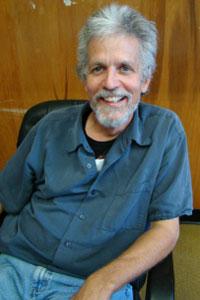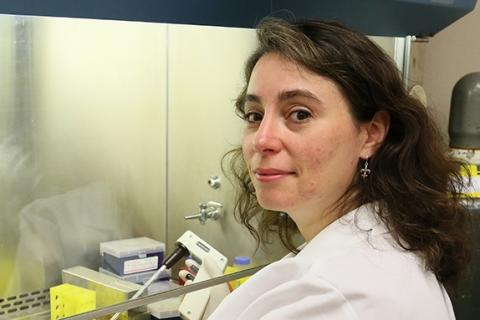The University of Louisiana at Lafayette has taken its place in the top level of the nation’s research institutions
Sea Anemone May Cure Deafness!
Mon, 08/08/2016 - 2:35pmTwo of our professors, Dr. Glen Watson and Dr. Karen Smith, and a former doctoral student, Pei-Ciao Tang, had their research shot around the world this weekend as news agencies like the Huffington Post, UK; BT.com; Proto magazine; the Los Angeles Times; and the Daily Mail touted the release of their research in the Journal of Experimental Biology.
The big news? Sea anemone proteins were used to repair damaged hair cells from mouse ears! These are not the cells that produce the long hairs hanging out of elderly ears. These are the tiny hair cells required for hearing and balance. It may seem odd, but to Dr. Watson, it made sense. Sea anemones have the ability to repair their bodies, so why not their hair cells, which help them find food. Since hair bundles in sea anemones are similar to those in ears, why not try anemone repair proteins on ear cells.
Dr. Watson’s lab has focused on the function of hair cells of sea anemones and their repair since his arrival at UL Lafayette in 1989. As a student in Dr. Watson’s lab, D r. Tang studied the normal function of sea anemone hair bundles (PLoS One, 2014), and expanded her research to look at the repair mechanisms for the hair bundles (Hearing Research, (2015) Vol. 327, pp. 245-256), where she isolated repair proteins in the mucus of sea anemones important for repair of the hair bundles.
r. Tang studied the normal function of sea anemone hair bundles (PLoS One, 2014), and expanded her research to look at the repair mechanisms for the hair bundles (Hearing Research, (2015) Vol. 327, pp. 245-256), where she isolated repair proteins in the mucus of sea anemones important for repair of the hair bundles.
Previously, Dr. Watson’s lab had shown that repair proteins from sea anemones could aide recovery of damaged hair cells in blind cave fish. It is also known that hair bundles of sea anemones and hair cells of the ear share some key features, so Dr. Tang’s research was expanded further to test whether proteins from the mucus of the sea anemones could be used to repair damaged hair cells from the mouse ear.
Dr.  Smith was instrumental in culturing the tissue from the mouse ear which allowed the repair tests of sea anemone polypeptides to occur.
Smith was instrumental in culturing the tissue from the mouse ear which allowed the repair tests of sea anemone polypeptides to occur.
The repair proteins from the sea anemones improved the repair of the damaged mouse hair cells; this is likely due to the anemone proteins being more than 60 % identical to similar proteins in the mouse. Future research by the Watson Lab will work to elucidate the mechanisms by which the anemone proteins are inducing the repair.
Dr. Tang is currently at the Department of Otolaryngology, Indiana University School of Medicine. Please contact Dr. Watson for more information about this research.
We congratulate and thank Drs. Watson, Smith and Tang for their impressive contribution to this area of research and look forward to more progress from Dr. Watson and his students!
We are committed to Research for a Reason!
